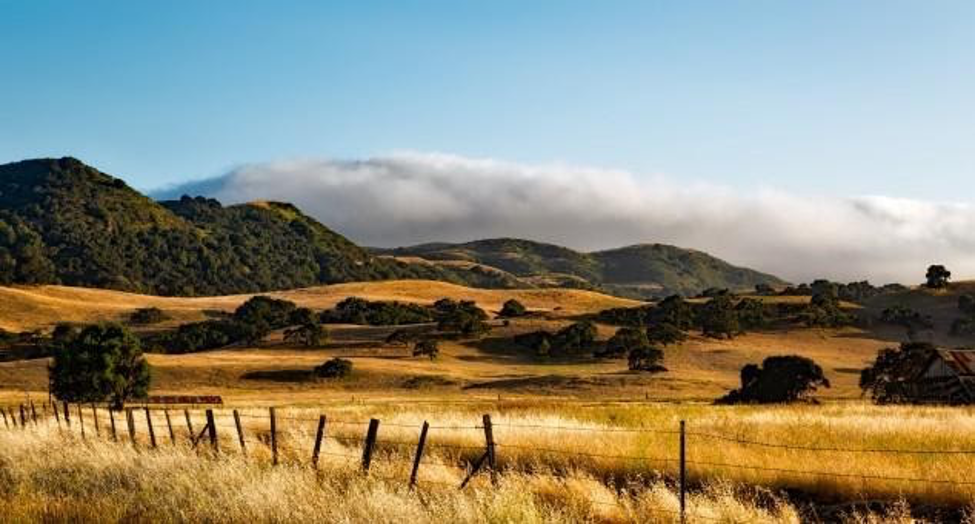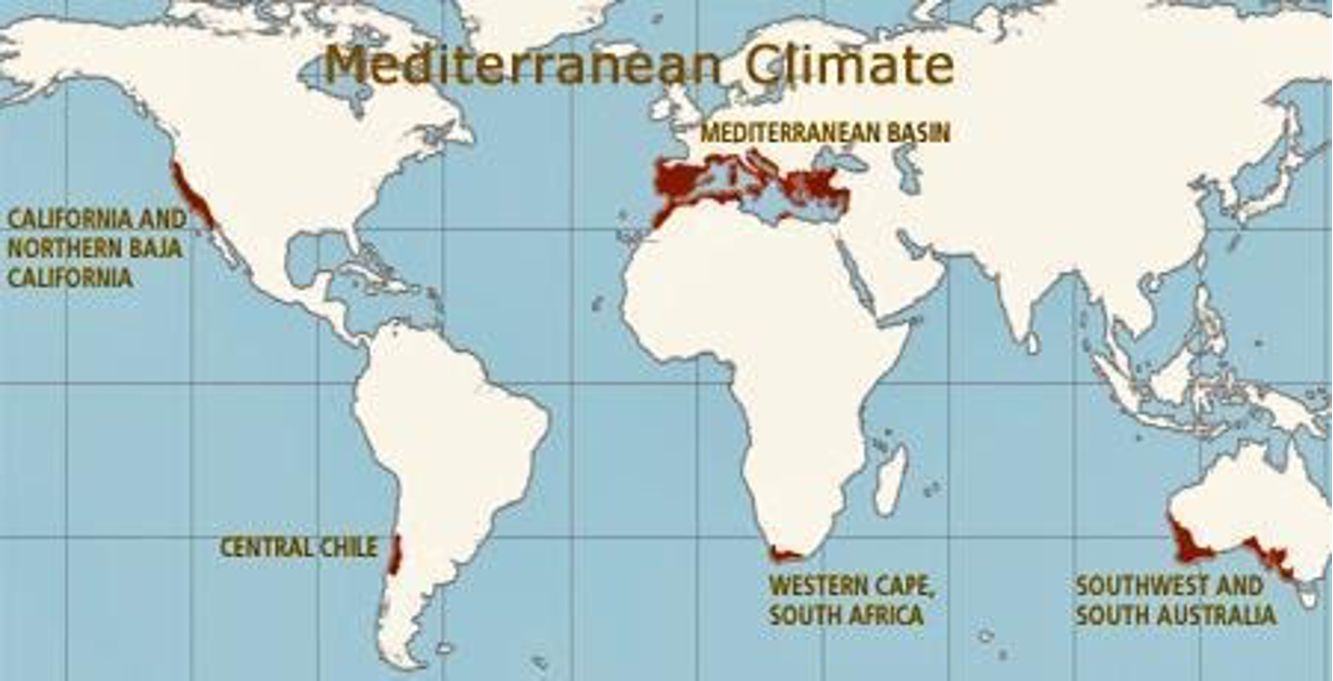Climate & Microclimates

Like soil and water, climate is a key factor in assessing your site, choosing plants, and ultimately growing a successful garden. In addition to understanding our Mediterranean climate, it pays to evaluate your climate zone and microclimates. Also, consider climate change as you make plant choices and manage your garden.
⟩How to assess your microclimates
⟩How climate change affects your garden
The Big Picture: Our Mediterranean Climate

Marin County sits in one of the world’s five Mediterranean climate zones, which comprise just 2% of the Earth’s land but 20% of its plant species.
• We share this climate with countries bordering the Mediterranean Basin as well as parts of coastal South Africa, southern Australia, Chile, and other areas of California.
• In the winter, Mediterranean climates are typically cool and wet with infrequent freezes.
• In the long dry season of summer and fall, our weather is warm or hot, with little rain.
• In general, plants that require a lot of water in summer are out of sync with our climate.
• Plants native to our area are, of course, adapted to our climate. There are numerous other advantages to choosing California native plants.
• Plants native to the world’s other Mediterranean climate zones also thrive in Marin. That is why our nurseries carry an expanding selection of plants that originated in other Mediterranean climates.
• Many plants native to California and Mediterranean climate areas have developed fascinating coping mechanisms to survive long stretches without water:
Leaf adaptations:
- Fine hair on undersides or wax coating insulates from heat.
- Small, tough, leathery leaves help reduce evaporation.
- Grey and silver color deflects sun.
- Vertical and/or rotating leaves reduce exposure to sun.
- Leaves curl up in hot weather to reduce sun exposure.
- Large leaves grow in wet months to capture as much water as possible to prepare for dry season, then small leaves grow in hot, dry months to save water.
- Drought-deciduous plants drop leaves during the dry season and enter a dormant state until the next rainfall.
- Fleshy succulent leaves collect and store water and then harden over to seal in the moisture.
Root adaptations:
- Shallow roots take advantage of early winter rains while deep roots allow access to ground water.
